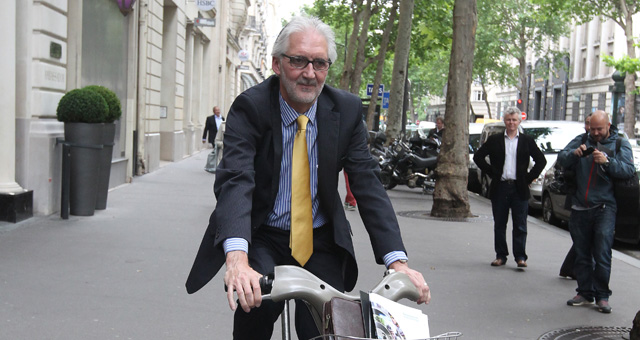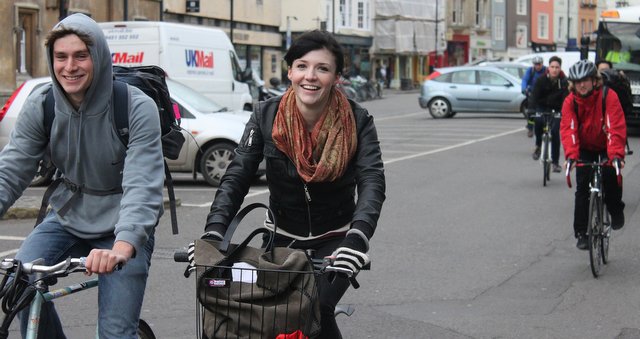If you use your bike to get from A to Z, at some point you’re going to want to leave it while you go about your business. What you don’t want is the shock of coming back to the empty space where your trusty steed once was.
So what can you do to make sure your beloved bike is there waiting for your return?

Lock it!
It may seem completely obvious, but whether you’re leaving your bike for two hours while you go to the gym or two minutes to pop into a shop, you should lock it up properly. It takes less than 10 seconds to hop on an unlocked bike and pedal off, so if you’re leaving it, lock it.
Where to lock it
The safest place to look it up is inside, and off the street. Some workplaces have secure lockups on site and these are worth asking about. You do still need to lock the bike up inside them though, particularly if it’s an area a lot of people have access too.
If you have to lock it up on the street, then a bright, busy area where there’ll be lots of people going past is ideal.
Although hiding it away out of sight might at first seem a sensible idea, it means if someone is going to have a go at it, there’s less chance of someone seeing them do it. Out in the open is best.
Think about the duration you are locking it up for too – the longer you leave it out, the greater the risk. Overnight every day for a week, for example, would not be a great idea.
What lock to use
At first sight locks can seem particularly expensive, but they aren’t half as pricy as the cost of a new bike, not to mention the trauma of getting one nicked in the first place. If you’ve forked out on a lovely new bike, it makes sense to spend a fair bit on a lock to keep it safe. Here are some of the things to look out for.
Security rating – locks are usually rated for security within a range, and many will also have a Sold Secure rating. These go from bronze and silver, to gold, which is the most secure. As a general rule, the higher the level, the higher the price, the more secure.
D-Locks – names for their shape. These are very secure, made up of a rigid metal U shape, with a bar that locks over the top. These come in a variety of security levels. The downside is they are quite heavy, with the weight increasing with the security rating.
Cable locks – usually a metal cable sheathed in a plastic or rubber. These are lighter than D-Locks, but not quite as secure.
Chain locks – Not just any chain, but a sturdy, heavy, robustly secure chain, again usually with a plastic or fabric coating. Quite handy as you can usually wear them around your waist when you are cycling, rather than having it attached to the bike.
Key or code – some locks have keys, others need you to remember a code. Work out which works best for you. For the key-based locks, many manufacturers allow you to register the lock online, so you can get replacement keys if you need.
Flex cable – a plastic coated flexible cable, available in different lengths and diameters. On their own, these are not particularly secure, however they are handy to use for securing elements of your bike to more robust locks, like wheels and saddles.
Using two different types of lock is a good idea, as it means any potential thieves need to have two different sets of lock picking equipment to get through to your bike.

How to lock it
- Attach it to something solid, firmly attached to the ground, and that the bike can’t be lifted from. Good examples are lampposts, railings and bike racks.
- Always lock through the wheels AND frame AND the thing you are locking it to e.g. bike rack.
- If you have quick release wheels that can be taken off easily, make sure you lock both of these up carefully. There are a several options; a lock each for the front and back wheel (again, through the frame and the bike rack), or take the front wheel off, place it next to the rear wheel and lock them together. You can also get a length of flex cable, thread this through both wheels and secure it with a D-Lock.
- Remove anything detachable like lights, pumps, bottles and bags.
- If you have a quick release seat post, you can either take the seat post and saddle with you for the day, or use another length of flex cable to lock it to the bike.
- Make it hard for any potential thieves. Place the locks so the locking mechanism is hard and awkward to get to.
- If you are using two locks, make sure that both of them go through the frame as well as the wheels/bike rack.
Register it!
BikeRegister is, you’ve guessed it, an online database of bikes. Its recommended and used by the Police, so its rated highly, and registering is free.
Easy to use, you fill in an online form with various details about your bike. Then, should worse come to worse, you can flag this on the site, increasing your chances of recovery.
You can also get labels and markers for your bike, starting at £10.90.
The Police and other organisations also run regular free bike marking sessions, where you can get all of this done for you. Check with your local constabulary or council to see what’s happening with you.
Insurance
For peace of mind, you might want to get your bike insured. Lots of different companies offer cycle insurance, and rates will vary depending on the type of bike you have, how old it is, and where you live.
Many insurers will also specify particular types or levels of lock you have to use in order to be covered. Some home and contents policies will also cover bikes, but make sure you check the policy fine print.
Both British Cycling and CTC offer insurance.
Commuting or back-up bike
If you have to leave your bike locked up outside, you might want to look at getting a cheap or second hand bike. It won’t look as desirable as your shiny road machine, or elegant sit-up-and-beg, and you won’t be as worried about it if it does disappear.
Other options
If keeping it outside isn’t an option, and there’s not a lot of room inside, you could opt for a folding bike like a Brompton or Tern. These fold down to a relatively small size – think largish on-board suitcase size, so you could fit under or by your desk during the day.
Headline image copyright Aaron Brown from Flickr





